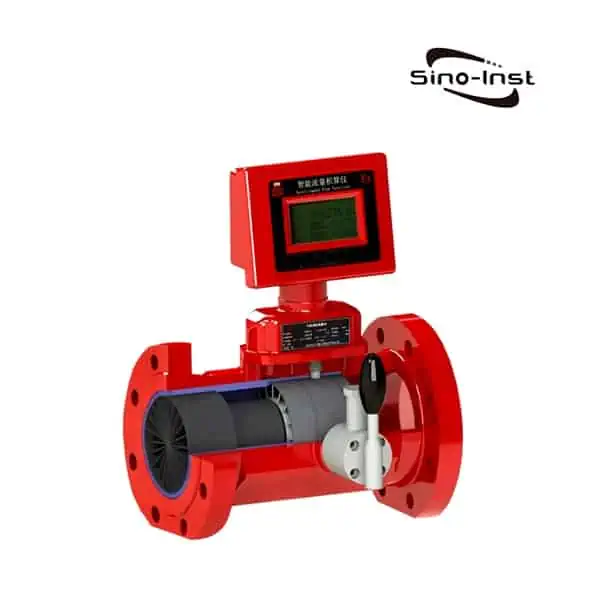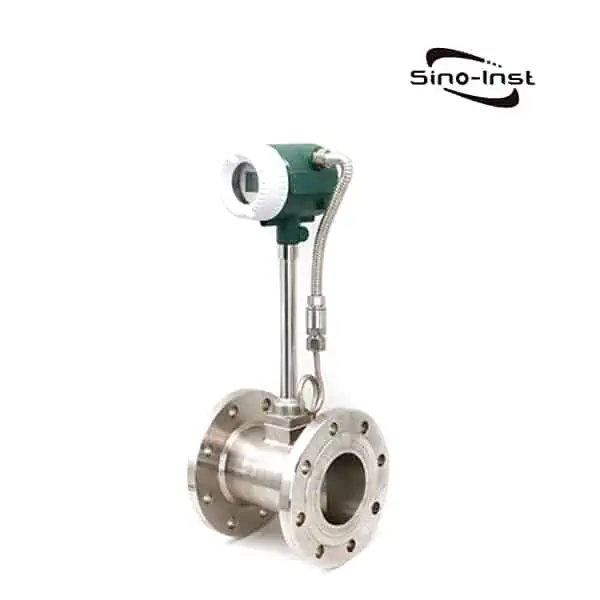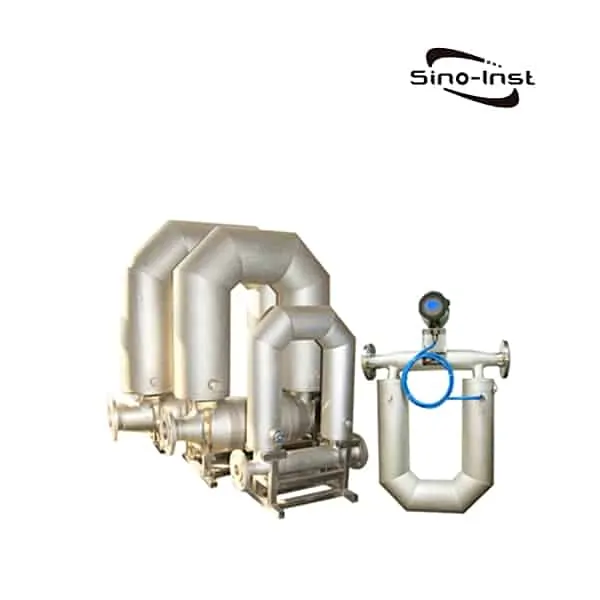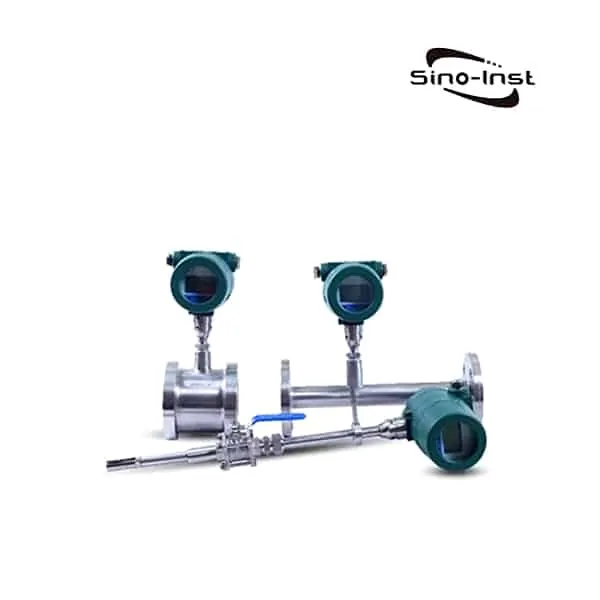6″ Flow meters are specially designed for DN150, which is 6 inch pipes. If you happen to need to detect the flow of 6″ pipes. Then you can refer to the content of our blog. Hope this helps you find suitable 6″ flow meters.
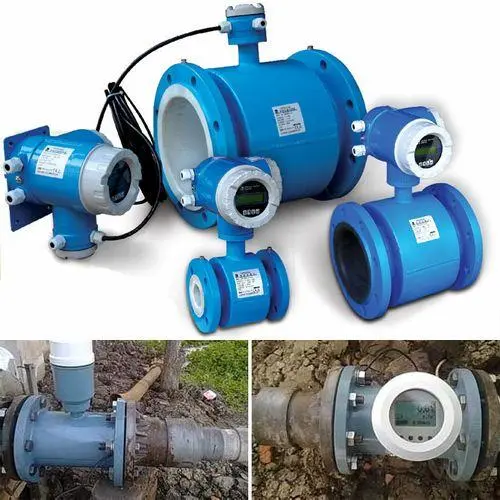
Overview: What is a 6″ Flow Meter?
We usually say 6″ Flow Meter, and some people may default to 6″ Water Flow Meter, or 6″ Water Meter. But this is not rigorous. There are many types of flow meters. They can be 6″ electromagnetic flow meters, 6 ” Turbine flowmeter, 6″ ultrasonic flowmeter, 6″ mass flowmeter, 6″ mass flowmeter, 6″ gear flowmeter, etc. Different types of flowmeters are suitable for different media and different working conditions. So, We need to select an appropriate flow meter based on the actual measurement conditions.
Sino-Inst is a manufacturer of flow meters. Based on our many years of service experience, we have compiled the following content. Hope this helps you choose the right 6″ Flow Meter. Let’s take a look.
If you are new to flow measurement, please follow our steps to get familiar with it step by step.
If you are experienced, then you can choose to look directly at the type of flow meter that interests you.
Here you will find all the 6 inch sizes we offer.
Featured 6 inch Flow Meters
How to choose 6” flow meter?
Before choosing a 6″ flow meter, we should first know what kind of medium you are measuring?
The simplest distinction: gas or liquid?
If it is gas: what gas is it? Is it corrosive?
If it’s liquid: What liquid is it? Is it conductive? Is it corrosive? Is the viscosity higher? Whether there are particles, etc.
Why should the distinction be so clear? For example: you want to measure the water flow in a DN150 pipe. For different types of water, we will recommend different flow meters. And their prices may vary a lot.
For example, measure the water in DN150 pipes. There are many types of water, including: pure water, clean water, municipal water, fresh water, fire water, chilled water, RO water, soft water, raw water, rainwater, geothermal water, thermal condensate water, seawater, drinking water, hard water, thermal water Water, sewage, acidic water, drinking water, river water, tap water, industrial sewage, boiler water, chlorinated water, borehole water, distilled water, wastewater containing suspended particles, purified water, mineral water, deionized water, etc.
If the choice is simple, then electromagnetic flowmeter is the first choice.
In addition to some non-conductive RO water, deionized water, DM water, pure water, deionized water, etc. If you want to measure the volume flow of RO water, pure water, and deionized water, we can choose a 6-inch turbine flowmeter or a vortex flowmeter.
Mass flow meters can measure all of the above water, whether it is pure water or dirty water or water containing suspended solids. But the price of Coriolis flow meter is not cheap.
Therefore, in the first step of choosing a 6” flow meter, you must clearly know what the medium is in your pipeline.
Of course. In addition to knowing what the medium is, you also need to know the conditions inside the pipeline, the most basic ones: pressure and temperature. This is all you need to know.
Now that you know what’s going on inside your pipe, you need to understand the different types of 6″ Flow Meters.
6 inch Flow Meters Types
Let’s look at it step by step. First, let’s look at the types of DN150 flow meters that can measure liquids. And their respective measurement advantages and measurement ranges.
6″ Electromagnetic Flowmeter-The most commonly used Water Flowmeter
Magnetic Flow Meters: Suitable for conductive liquids, these flow meters measure flow rate based on Faraday’s law of electromagnetic induction. They are ideal for applications with corrosive or abrasive fluids.
The parameter configuration of the 6-inch electromagnetic flowmeter is as follows:
- Electromagnetic Flowmeter
- DN150-6 inches
- Lining: Polyurethane, Teflon, rubber, polyurethane (PU), PFA, etc. optional.
- Flow sensor electrode material: 316L SUS, Hastelloy B, Hastelloy C, titanium, tantalum, tungsten carbide, platinum, etc. optional.
- Power supply: 24V DC or 220V AC power supply or battery power supply;
- Output: RS485 Modbus RTU; optional HART protocol, pulse output, current 4-20mA output or frequency output;
- LCD displays instantaneous flow and cumulative total
- Integrated flange connection: flange end connection, RF, 6”, ANSI 150LB, #300, 600LB, JIS 10K, PN16, PN25, PN40, etc.
- Flow range: 30-600 m3/h, 132-2641 GPM.
- Accuracy: 0.5%
- Temperature resistance: 70℃
- Pressure resistance: 16bar
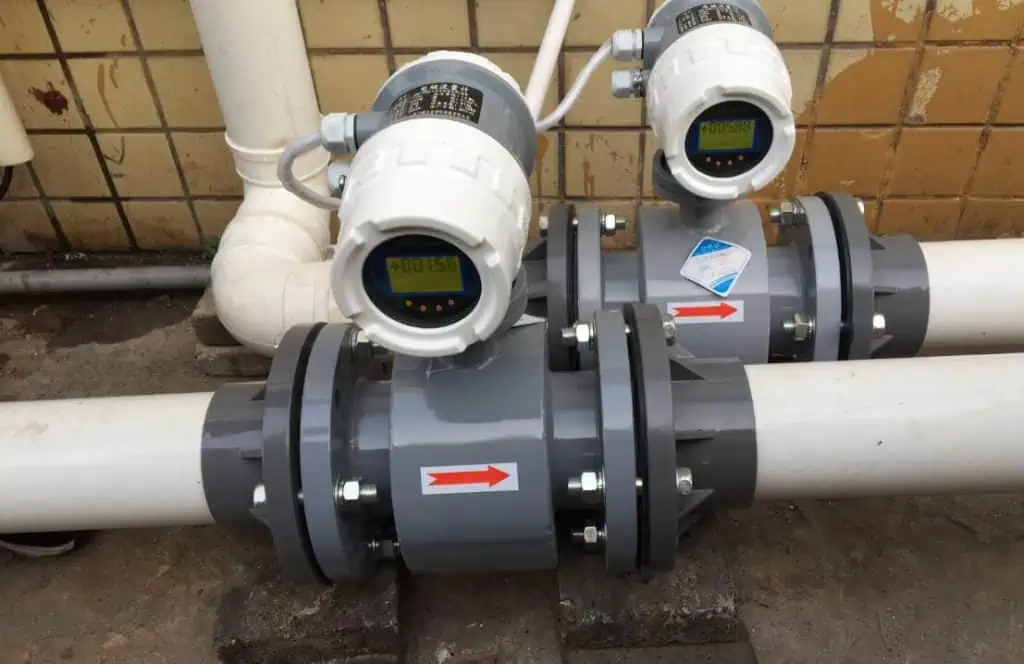
6″ Tubrine Flowmeter
Turbine Flow Meters: These flow meters use a spinning turbine rotor to measure flow rate. The rotor’s rotation frequency is proportional to the fluid velocity, making them ideal for clean, low-viscosity fluids.
The conventional configuration of DN150 turbine flowmeter is as follows:
- Liquid turbine flow meter
- DN150
- DC24V
- Output two-wire system 4~20mA
- LCD displays instantaneous flow and cumulative total
- Body material: 304 stainless steel, optional 316 stainless steel
- Impeller 2Cr13
- DN150 flange connection
- Flow range: 30~300m3/h
- Accuracy 0.5%
- Temperature resistance 120℃, high temperature and extremely low temperature parameters can be customized;
- The pressure resistance is 6.3Mpa, and the high pressure can be customized to 25Mpa or 42Mpa;
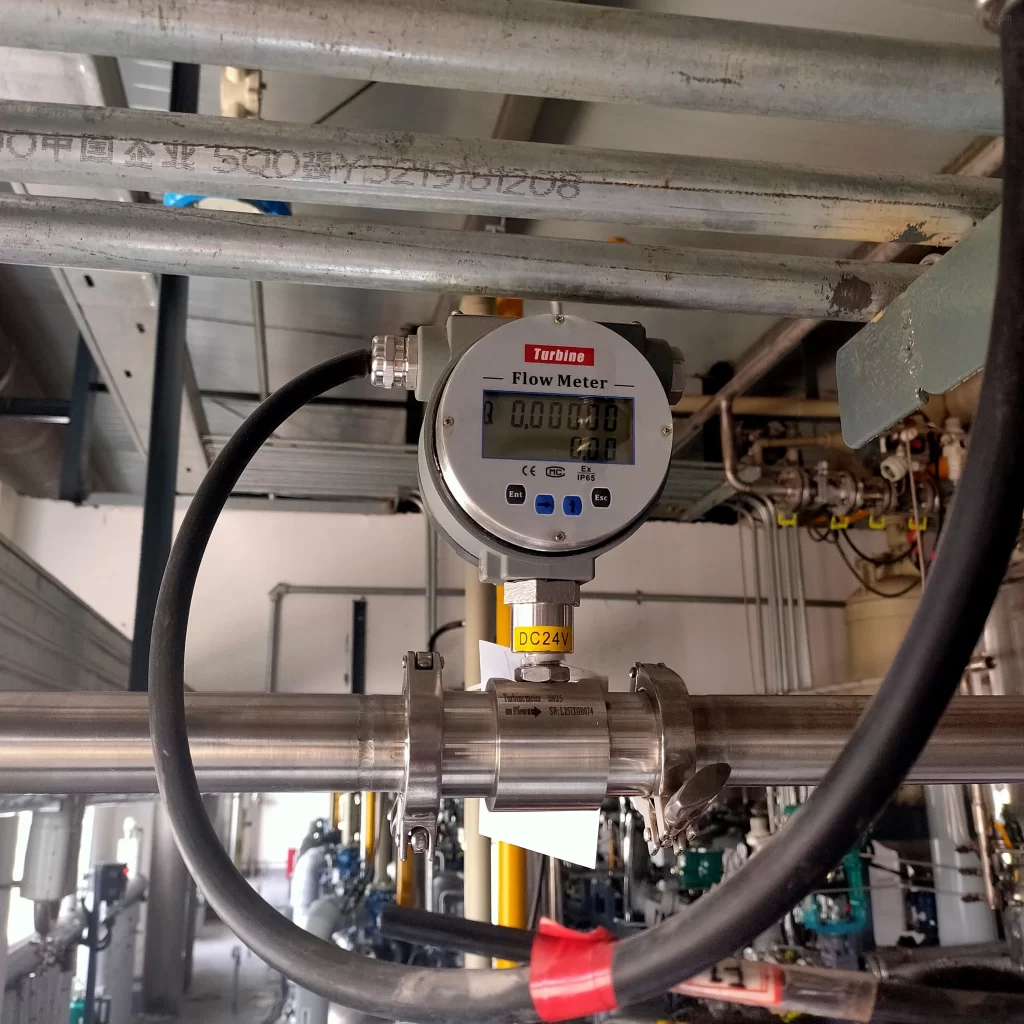
6 inch coriolis mass flow meter
Coriolis Flow Meters: By measuring the mass flow rate directly, these flow meters provide highly accurate measurements for liquids, gases, and slurries. Their unique ability to measure mass flow and density makes them versatile and reliable.
The conventional configuration of DN150 Coriolis mass flow meter is as follows:
- Coriolis mass flow meter
- DN150,
- Flow range: 0~360000kg/h
- Temperature range: -100~200℃
- Pressure range: 0~4.0MPa
- Accuracy: 0.1%
- Display: cumulative+instantaneous+density+temperature
- Material: measuring tube 316L, shell SS304
- Explosion-proof level: ExdibIICT6 Gb
- Protection level: IP67
- Output signal: 0-10KHz, 4-20mA
- Communication method: RS485, MODBUS
- Power supply: 24VDC or 220VAC, integrated
- Flange standards: GB/T 9119-2010, ANSI 150#, JIS 5k, etc. optional.
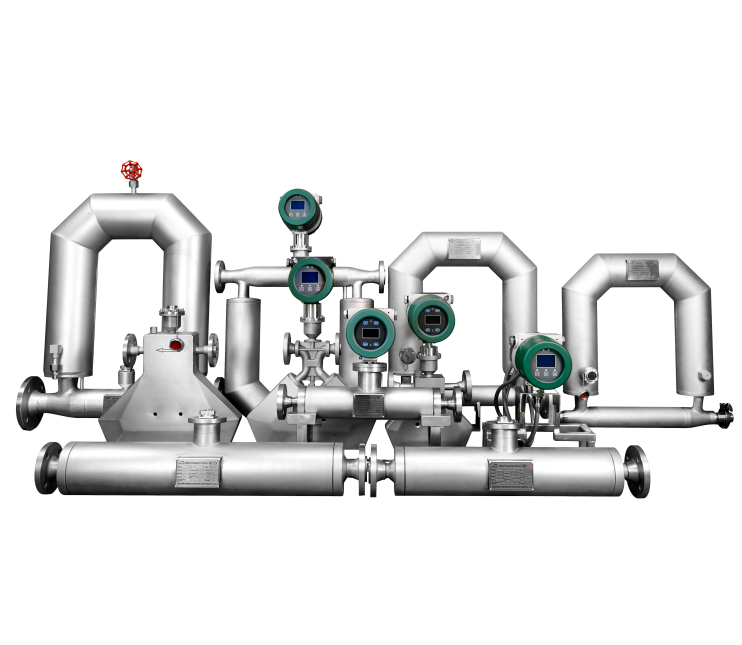
6 inch ultrasonic flow meter
Ultrasonic Flow Meters: By measuring the transit time or Doppler shift of ultrasonic signals, these non-invasive flow meters can accurately measure liquid and gas flow rates without contacting the fluid.
The configuration of ultrasonic flowmeter is relatively flexible. You can choose handheld host, wall-mounted host, etc.
Sensors can be selected from external clamp type, plug-in type, pipe type, etc.
It can be configured flexibly as long as it meets your installation needs. You can even add a temperature sensor to become a heat measuring instrument. More about: New Products! Insertion Type Ultrasonic Flow Meter-Heat Meter–Mono/multi-Channel

6 inch Oval gear flow meter
Positive Displacement Flow Meters: These flow meters measure flow rate by capturing a fixed volume of fluid and counting the number of times the volume is filled and emptied. They are ideal for high-viscosity fluids and applications requiring high accuracy.
For media with different viscosity, the measuring range of DN150 Oval Gear Flow Meter is also different. for example:
- Viscosity: 0.6—2mPa.s, measuring range: 45—190 m³/h
- Viscosity: 2—200mPa.s, measuring range: 34—190 m³/h、
- Viscosity: 200—1000mPa.s, measuring range: 27-133 m³/h
- Viscosity: 1000-2000mPa.s, measuring range: 19-95 m³/h
Ok. The above are several liquid flow meters we commonly use. Next, let’s look at the gas flow meter.
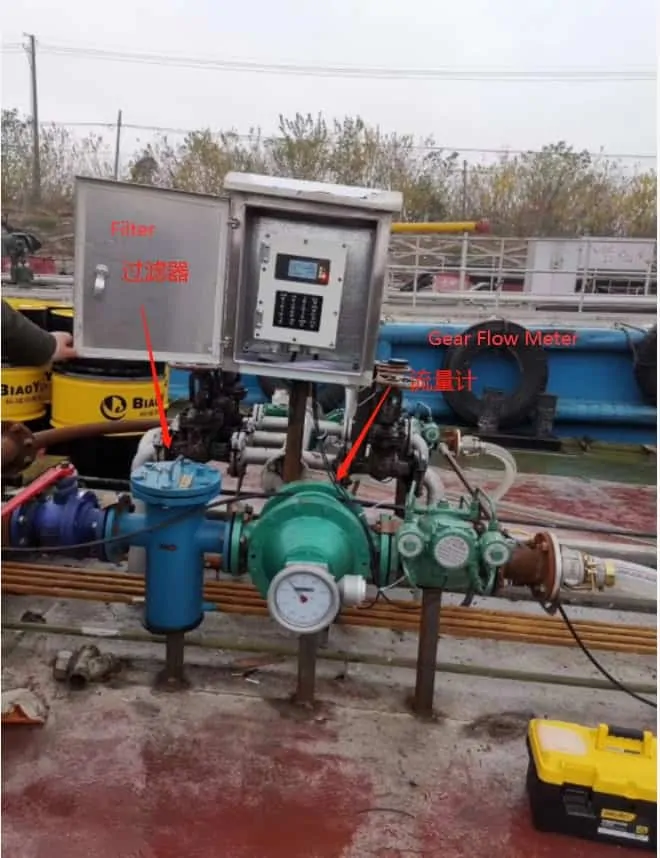
6 inch vortex flowmeter
Vortex Flow Meters: By measuring the frequency of vortices shed from a bluff body, vortex flow meters can accurately measure the flow rate of liquids, gases, and steam. Their robust design and low maintenance make them popular in various industries.
Common configurations of 6″ vortex flowmeters are as follows:
- Vortex flowmeter
- DN150
- DC24V
- Output: two-wire system 4~20mA, pulse, etc. optional.
- LCD displays instantaneous flow and cumulative total
- Body material 304 stainless steel
- 600# American standard flange connection
- Flow range: liquid 40~350m³/h; gas 280~2240m³/h; steam 1.4~11t/h;
- Accuracy 1.5%
- Temperature resistance: 100℃, 250℃, 350℃;
- Pressure and temperature compensation optional.
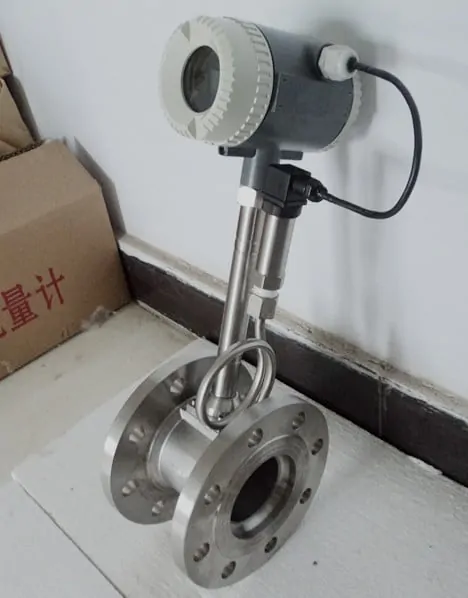
6 inch thermal mass flow meter
Thermal gas mass flowmeter is designed based on the principle of thermal diffusion. The instrument uses the constant temperature difference method to accurately measure gas. Widely used in the measurement of oxygen, nitrogen, hydrogen, chlorine, torch gas, blast furnace gas, biogas and other gases.
The general configuration of the 6 inch thermal mass flow meter is as follows:
- Thermal gas mass flow meter
- DN150
- AC220V/DC24V dual power supply
- Output 4~20mA with RS485 communication
- LCD displays instantaneous flow and cumulative total
- Body material 304 stainless steel
- Flange connection
- Flow range: 64~6400Nm3/h
- Accuracy 1.5%
- Temperature resistance 100℃, 220℃ optional
- Pressure 1.6Mpa
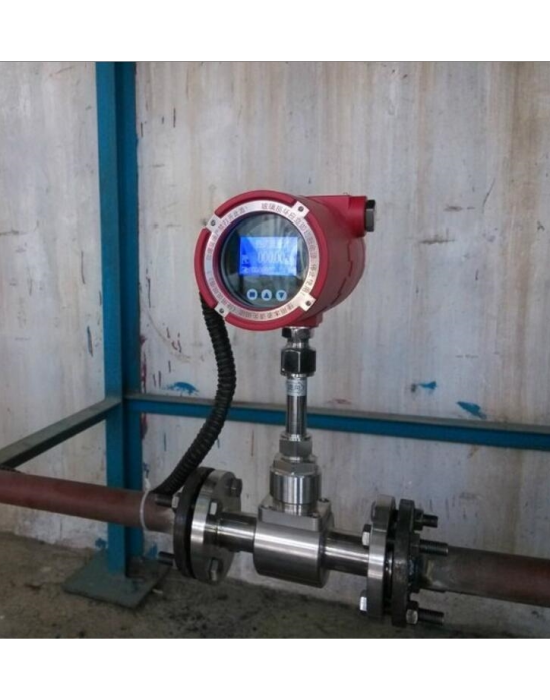
Inline or Insertion
Of course, finally you need to consider the structure of the flow meter. Most of the flow meters we mentioned above can be either inline type or plug-in type. For example, the DN150 pipe for measuring urea solution can be a 6″ inline electromagnetic flowmeter or a 6″ plug-in electromagnetic flowmeter. The vortex flow meter can also be a 6″ insertion type vortex flow meter, and the thermal flow meter can be a 6″ insertion type thermal flow meter.
More Flow Measurement Solutions
What Is Turbine Flow Meter? and FAQs
What Is a Thermal Mass Flow Meter?
Flow Meter Straight Length Requirements Guide
What Is Density Flow Meter: Principles and Applications
What Is a Turbine Flow Meter for Gas? and Why Choose It?
The Role of Gear Flow Meters For Cement Additives
We, Sino-Inst, are a professional flow meter manufacturer. The 6″ Flow Meters supplied by us are widely used in various industries in various countries.
Our 6″ Flow Meters meet different user measurement needs. Whether you need to measure wastewater, seawater, urea, ammonia, sulfuric acid and other liquids, or dry chlorine, wet chlorine, biogas, compressed air, hydrogen, nitrogen, etc. gases. We can select suitable 6″ Flow Meters for you based on your measurement parameters.
If you have any questions about purchasing 6″ Flow Meters, please feel free to contact our engineers for free consultation!
Request a Quote

Wu Peng, born in 1980, is a highly respected and accomplished male engineer with extensive experience in the field of automation. With over 20 years of industry experience, Wu has made significant contributions to both academia and engineering projects.
Throughout his career, Wu Peng has participated in numerous national and international engineering projects. Some of his most notable projects include the development of an intelligent control system for oil refineries, the design of a cutting-edge distributed control system for petrochemical plants, and the optimization of control algorithms for natural gas pipelines.




